It’s hard to remember this now, but before Marvel Studios’ Iron Man debuted on May 2, 2008, these five things were true:
- Iron Man was a b-level comic book character (at best)
- Robert Downey, Jr., had never been in a movie that earned $100M
- Jon Favreau had directed two flops (Made, Zathura)… and Elf ($173M)
- Disney did not yet own Marvel Entertainment
- There was no such thing as the Marvel Cinematic Universe (MCU)
To say that Iron Man was a game-changer is an understatement.
Consider how absurd this movie looked to the industry (and the public) at the time:
A big-budget summer blockbuster from a first-time studio?
About a comic book character that most filmgoers had barely heard of?
Directed by a guy mostly known for comedy? (Favreau’s big break was screenwriting the Vince Vaughn breakout Swingers.)
Starring an actor better known for his tabloid scandals than his talent?
And overseen by then-unknown producer Kevin Feige, who was just 33 years old (!) when Iron Man hit theaters? (Although, to be fair, Feige had been producing Marvel films since the original X-Men in 2000.)
Given all this, you could be forgiven for thinking that Iron Man would be a flop.
But then we got this trailer:
… and it seemed like, maybe… just maybe… we might have a little surprise on our hands.
Little did we know in 2008 that Iron Man would forever change the future of media.
Iron Man’s Impact
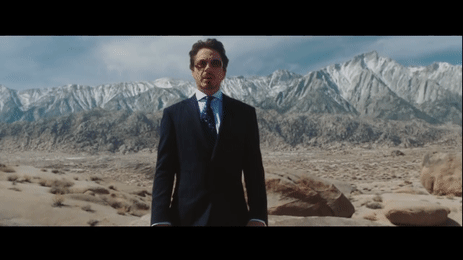
A whole new world…
$318 million dollars later, everything was different, almost overnight.
Iron Man was now a brand icon…
Downey was now a global megastar…
Favreau had directorial carte blanche…
Disney had their sights set on their next must-acquire corporate asset…
And a world of interconnected films, in what we’d come to know as the MCU, was proven to not only be possible but seriously about to happen, for real.
That interconnected universe is now how millions of fans the world over recognize Iron Man, Captain America, Thor, Spider-Man, and more — not from the comics that spawned them, but from the films that brought those stories to life.
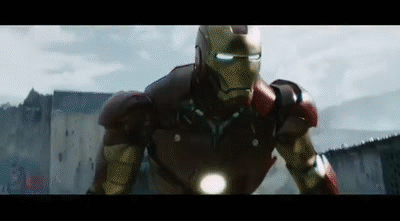
When Avengers: Infinity War debuted on April 27 (moved up by one week from its original date of May 4), the MCU turned 10.
Avengers: Infinity War is the MCU’s 19th film released over a ten year period. The first 18 films have collectively earned over $5.9 Billion just in the U.S., and those numbers are only going up. Marvel’s Black Panther just became the highest-grossing superhero film ever — earning over $600M after just one month in theaters — while the deft ensemble storytelling of Avengers: Infinity War already set the all-time opening weekend box office record.
Granted, these new records aren’t always what they seem… but that’s a story for another day.
RELATED POST:
Looking back, it’s clear that Iron Man‘s effects extend well beyond the MCU.
The film’s blend of fast-paced action, cutting-edge CGI, character-driven dramedy, and winking pop culture insiderism became the template for the next decade of summer blockbusters. The Marvel formula is now so omnipresent across TV and film that a story can define itself simply by not following this template — although the dubious ratings and box office results of breaking from the formula make that a questionable proposition.
Now, since Robert Downey, Jr.’s time as Iron Man may finally end during the Infinity War saga, it’s worth looking back at the movie that changed the game and proved that the MCU was a viable idea in the first place.
Here are 10 Marvel movie tropes that Favreau, Downey, and Feige (and screenwriters Mark Fergus & Hawk Ostby) established in Iron Man that set the stage for a full decade of Marvel’s box office dominance.
The Hero’s Journey Arc
Yes, you’ve seen this one before.
Like most of the tropes on this list, Iron Man isn’t the first film to use the hero’s journey arc. But they did it so well that it became a default inclusion in nearly every Marvel film thereafter. (This is why almost every Marvel movie tells basically the same story.)
RELATED POST:
In the case of Iron Man, this arc is clearly defined:
- Tony Stark starts out as a rich genius cad who makes millions from war profiteering
- Tony is taken hostage by terrorists and nearly killed by his own weapons
- Tony must rise to the challenge and defeat his captors with his singular talent (technology)
- Tony finds a mentor whose advice (and death) inspires him to change his life
- Tony tries to change, but the world he’s built around himself resists that change
- Tony must eventually destroy the trap of his past in order to create a better future
In the end, Tony overcomes his inner flaws (boundless ego + emotional distance) and repairs his interpersonal relationships (with Pepper and Rhodey) so they can all work together to defeat the villain and establish a “new normal” going forward.
Speaking of which…
The Villain (Which the Hero Sort of Created Himself)
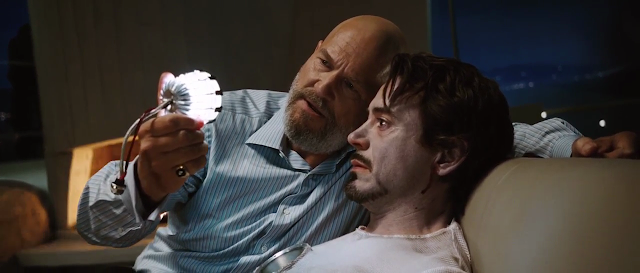
I can show you the world… shining, shimmering, splendid…
Like most Marvel movie villains, Obadiah Stane (Jeff Bridges) represents a warped extreme of the hero’s deepest desires.
In this case, Stane has Stark’s excessive ego plus an inferiority complex from living in Stark’s shadow. He also shares Tony’s self-identification as a genius who’s best known for creating weapons of terror that cause mass destruction, which he deludes himself into believing are somehow justified. Plus, he also represents Tony’s troubled relationship with his father, all in one. (We’ll come back to that last part in a second.)
But Obadiah is the end boss. Before Tony can beat him, he must first escape from the terrorists who’ve taken him captive using his own weapons. And this plot point is actually the hinge that the whole MCU and the superhero genre itself turns on.
It was a bold statement in 2008 for a comic book action film to imply that world peacekeeping is a double-edged sword. But as Todd VanDerWerff masterfully explains in Vox, the evolution of the American superhero film in the 21st Century matches America’s evolving identity since 9/11. As we struggle to rectify our power and responsibility with our vulnerability and our place in the shifting global ecosystem, our power fantasies have evolved too. Instead of a clear demarcation between good and evil, comic book films spend an increasing amount of time asking “what’s the dividing line between a hero and a villain?”
In many cases, that line is getting harder and harder to see. But it usually comes down to one big difference: the villains want to use their power to oppress, and the heroes want to use their power to defend, liberate, and inspire.
Oh, and the heroes almost definitely have daddy issues.
The Missing Dad Trope
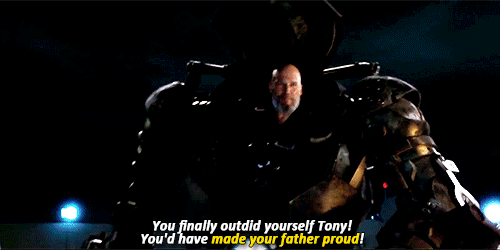
Tony Stark had a problematic relationship with his dad, Howard Stark.
He’s not alone.
Steve Rogers doesn’t have a father figure, so he joins the army to prove his manhood.
Thor is the crown prince who struggles to live up to his legendary father Odin’s reputation and expectations — he’d rather play than govern.
Peter Quill’s dad abandoned him… and also turned out to be a sentient planet literally named Ego, so…
Spider-Man doesn’t have any parents. (Neither, it seems, does Doctor Strange.)
And Black Panther’s dad T’Chaka was a king and a hero, so T’Challa spends his first movie trying to live up to his father’s legacy while rectifying the character flaws that his dad tried to hide.
Again, Iron Man isn’t the first action movie to use this trope. But it’s become a defining characteristic of nearly every Marvel hero since… which, ironically, makes it less defining as time goes on.
Then again, troubled relationships with biological dads do tend to play an outsized role in male power fantasies, so…
Luckily, the hero can always be redeemed by love… right?
Well… not exactly.
Marvel’s Wasted Female Leads
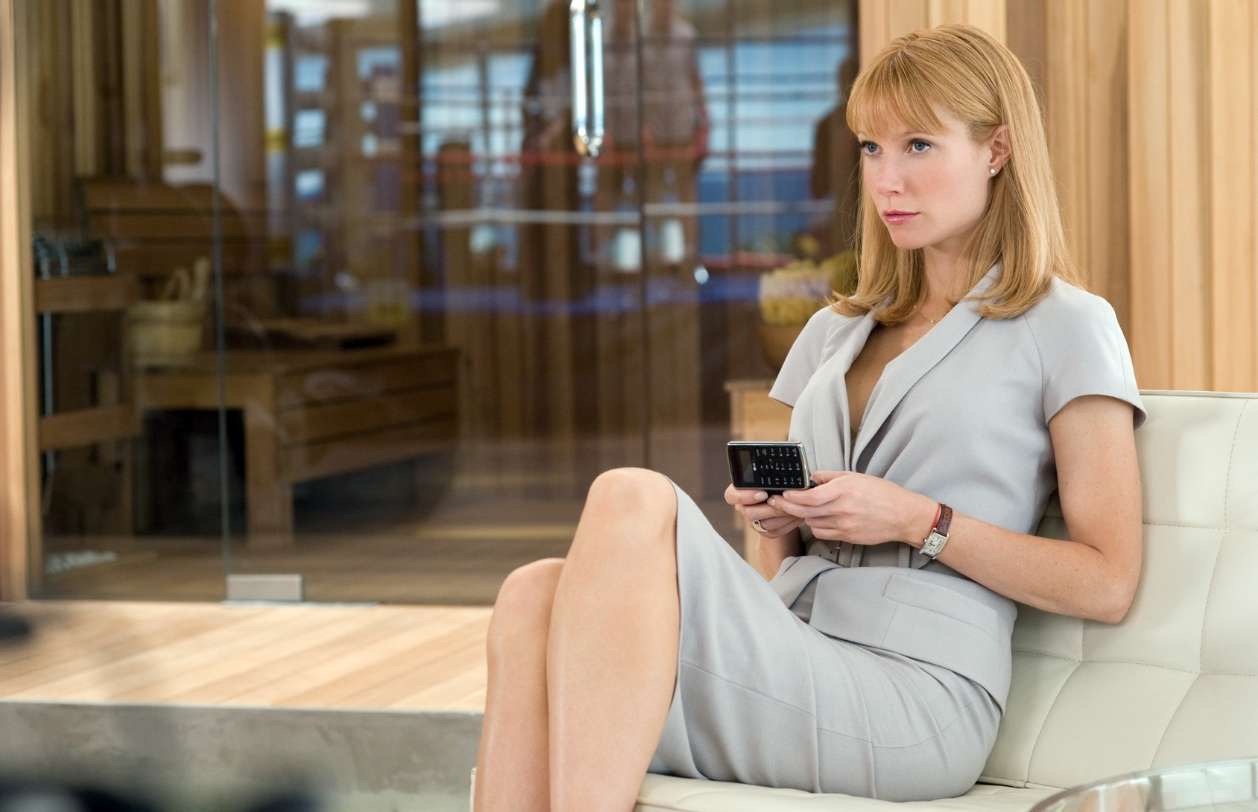
Don’t you dare close your eyes…
The push-and-pull chemistry between Robert Downey, Jr., as Tony Stark and Gwyneth Paltrow as Pepper Potts is one of the highlights of Iron Man.
Tony’s reluctant embrace of his feelings for Pepper throughout the three Iron Man movies is one big difference between him and Bruce Wayne. Whereas Batman forever keeps those closest to him at an arm’s length, Tony realizes that his relationships are the only thing that make life worth living and protecting — and he can’t do it alone.
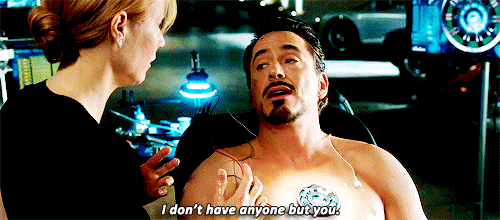
Unfortunately, the Tony-and-Pepper relationship also created another trope that Marvel felt obliged to repeat in every film: in general, the boy (doesn’t really) get the girl.
Sure, Tony and Pepper have a will-they-or-won’t-they vibe that eventually becomes a legit relationship over the next two films… but his work as Iron Man also drives them apart because a Marvel hero must always choose between life and work, and life always loses.
Steve Rogers literally sacrifices himself to stop the Red Skull, losing Peggy Carter in the process.
Dr. Strange drives Christine Palmer away in his quest to be the best at what he does, and then when he tries to win her back, she wisely declines.
And yes, Thor and Jane Foster fall in love, but by Avengers: Age of Ultron, Thor and Tony are reduced to debating which of their absentee girlfriends is better. (And whatever happened to Sif, anyway?)
This highlights the other issue with Marvel’s girlfriends: they’re stuck forever putting up with man-boys whose impetuousness is their defining trait.
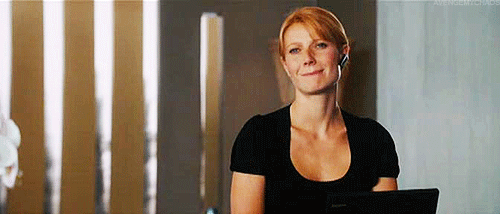
The Christine-Strange relationship is the flip side of the Pepper-Tony relationship: what if Pepper didn’t want to put up with Tony’s toxic masculinity?
Peter Quill is a dumb Tony Stark in space, which makes Gamora the lethal Pepper Potts.
And Black Panther so closely resembles the Tony Stark arc that T’Challa’s “puppy love” relationship with Nakia almost exactly mirrors Tony and Pepper’s. She’s the queen in waiting, but she doesn’t want to be stuck validating a man-child when she could help more people more practically on her own.
This leads to most Marvel heroes being stuck hanging out with each other, like a cabal of work buddies who can’t be satisfied with their “real” identities once they leave the office.
Good thing they all have (the same) friend group!
It’s All About the Supporting Cast
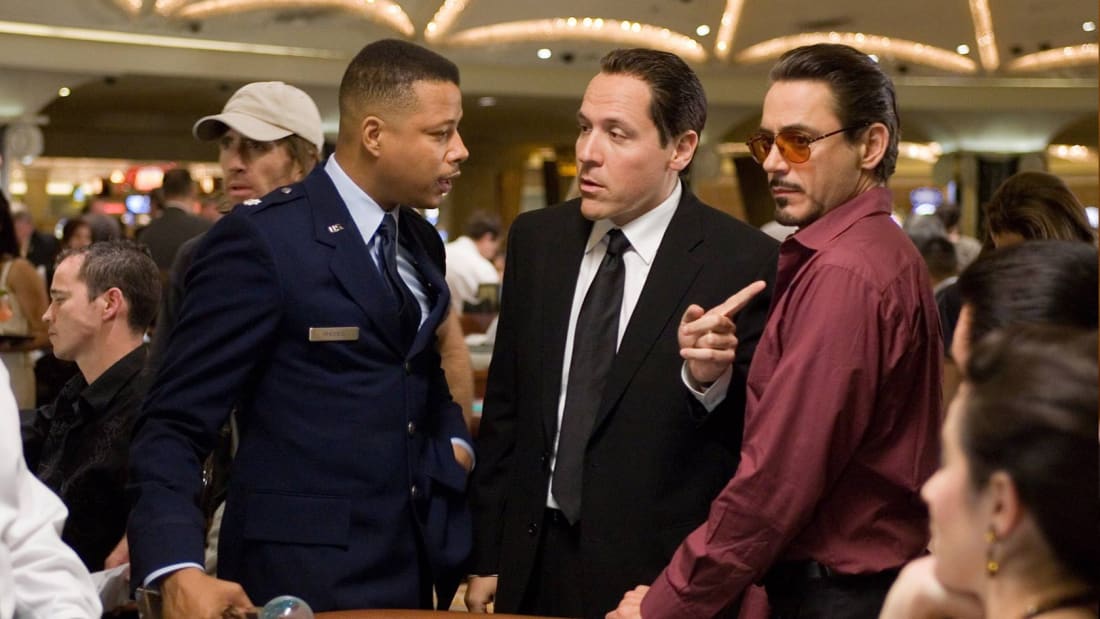
Vegas, baby, Vegas…
Tony Stark is Iron Man, but he can’t save the world by himself.
To do this, he needs the seven quintessential Marvel supporting character tropes:
- the selfless significant other who mostly overlooks his flaws (Pepper Potts)
- the sidekick / second banana / loyal best friend (James “Rhodey” Rhodes)
- the mentor who guides him to achieve his true destiny (Dr. Ho Yinsen)
- the insider who gives him access to power and info (Christine Everhart)
- the traditionalist who contrasts his individualism (Agent Phil Coulson)
- the comic relief whose haplessness makes the hero look super (Happy Hogan)
- the weapon that has as much personality as a person (Jarvis)
These characters provide the hero with ample opportunities for humor, pathos, and resolution… in every movie. Doubt this? Notice the similarities in purpose across most Marvel films:
Iron Man / Thor / Captain America / Doctor Strange / Black Panther
Pepper Potts / Jane Foster / Peggy Carter / Christine Palmer / Nakia
James “Rhodey” Rhodes / The Warriors 3 / Bucky / Wong / Okoye
Dr. Yinsen / Dr. Selvig / Dr. Erskine / The Ancient One / T’Chaka
Christine Everhart / Heimdall / Howard Stark / Mordo / Shuri
Agent Coulson / Odin / Colonel Phillips / Mordo / W’Kabi
Happy Hogan / Darcy / Howling Commandos / Dr. West / Everett Ross
Jarvis / Mjolnir / Cap’s Shield / Cloak of Levitation / Rhinoceros
Hey, if the character relationship template ain’t broke, don’t fix it.
But you know what is broken?
The Underwhelming Final Boss Battle
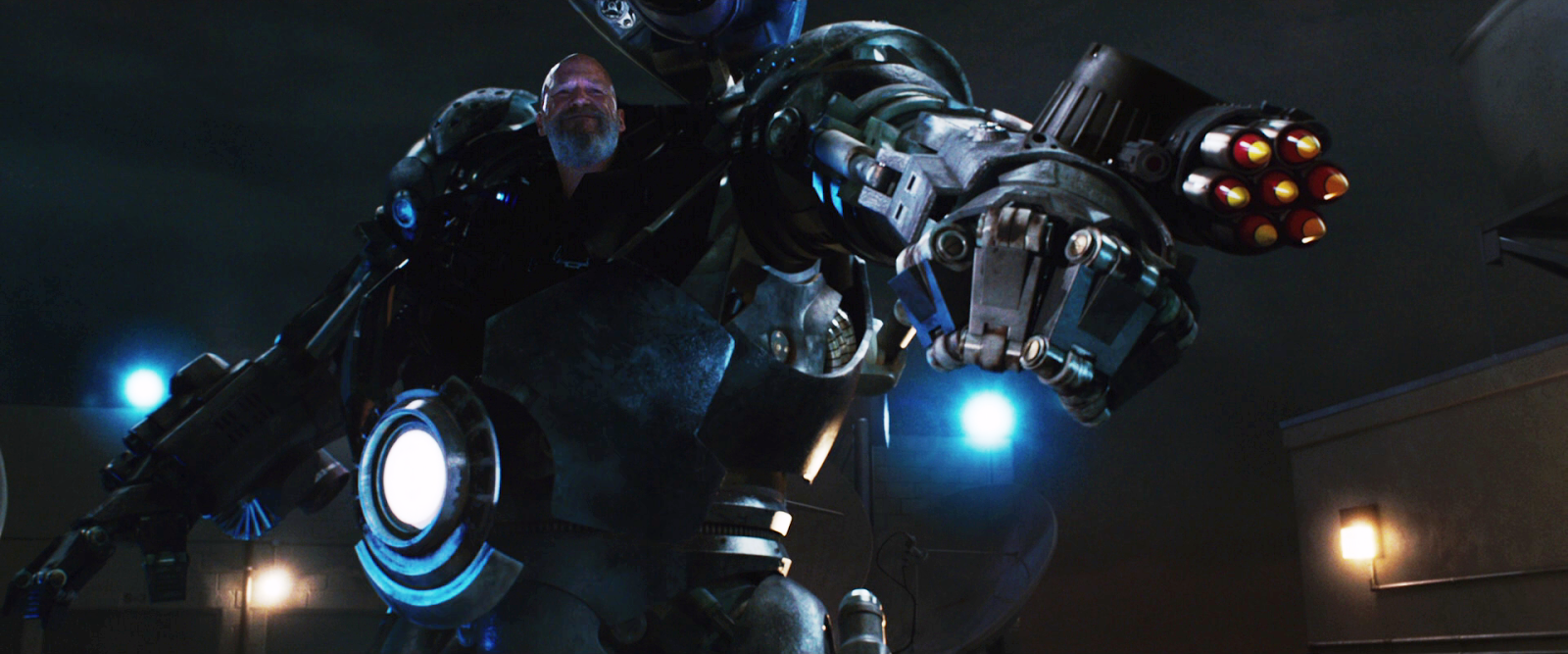
Unbelievable sights… indescribable feeling
For all the buildup to Iron Man‘s final act — seeing Tony learn how to use his new abilities, watching him overcome his personal flaws, and uncovering the dastardly plot that only Tony himself can stop (with help) — the showdown between Iron Man and Iron Monger is… kind of a dud.
Ironically, this also turned out to be a recurring theme in most Marvel films. From Obadiah Stane to Killmonger, nearly every Marvel villain has met an end that wasn’t quite worth the setup.
(This is a flaw that DC has also been copying, with Wonder Woman and Suicide Squad both building up to sub-par showdowns.)
But again, Iron Man wasn’t the first film to wobble its landing. (See: most Disney films, in which an epic villain is dispatched almost too easily.) This problem is mostly due to the story structure underlying the film’s plot: by requiring Stark and Stane to end up in a winner-take-all duel, we subconsciously know that there’s no way Stane can win, so the only question is “will his comeuppance be satisfying?” Unfortunately… no.
But neither was the Red Skull’s…
Or Malekith’s…
Or Ronan the Accuser’s…
Or Ultron’s…
Or Kaecilius’s…
Will Thanos’s be any different? We’ll find out soon enough.
You’d think that a film universe that continues from movie to movie would leave room for the villains to evolve alongside the heroes, but that doesn’t square with Marvel’s “decisive victory” checkbox.
However, after ten years of box office domination, it’s almost comforting to know that Marvel still has at least one area where it can keep improving — and, in Captain Marvel, it finally does.
RELATED POST:
The Fan Service Easter Egg Setup
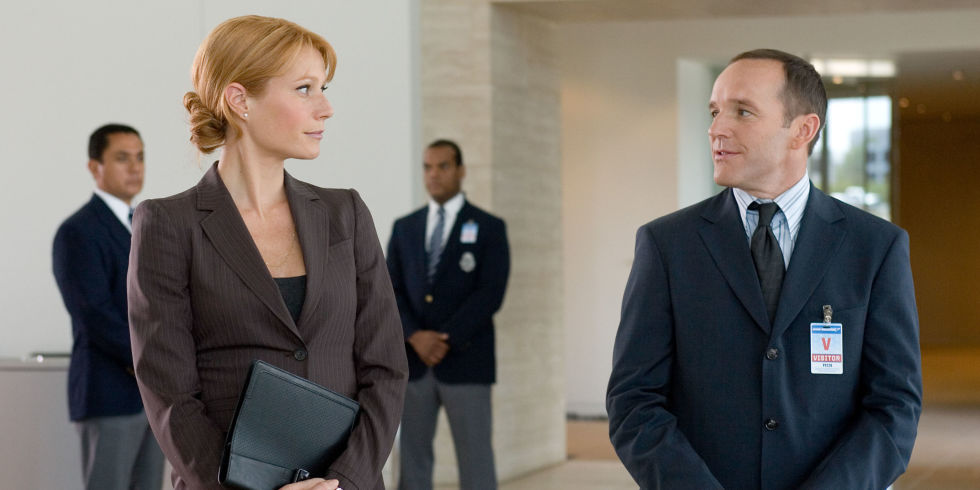
With over 50 years of print history to draw from, Marvel’s movies are packed with easter eggs that fans love to spot. But back in 2008, Marvel was dealing with characters who weren’t household names yet, so it had to telegraph most of those easter eggs as obviously as possible, to ensure inside jokes wouldn’t get lost in translation.
Thus, you have Agent Coulson frequently mentioning that he works for the Strategic Homeland Intervention, Enforcement, and Logistics Division, which he keeps being told is a terrible name… so he later shortens it to S.H.I.E.L.D. It’s a punchline that works on its own for newbies, but its first mention is intended to get the true fans excited and paying deeper attention.
Likewise, when Rhodey looks at the backup Iron Man armor in the film’s closing act and aaaaaalmost takes it out for a spin, I wasn’t the only person in my showing of the film who started spontaneously applauding. Lots of us knew that Rhodey becomes War Machine in the comics, but the first film teased us with a fake-out that we fully appreciated.
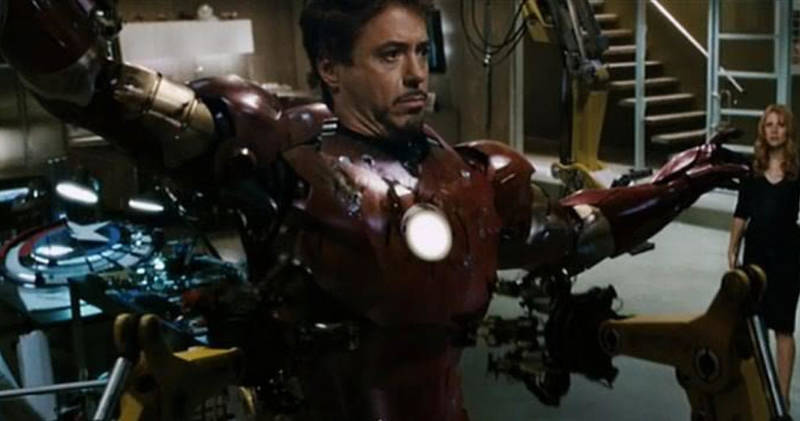
And noticing Captain America’s shield in the background of a scene gave fans a real perk — it was proof that Marvel Studios was starting to think ahead toward building out a larger world of interconnected heroes unlike anything we’d seen onscreen before.
But nothing could compare to the ultimate Marvel trope:
The Must-See Closing Credits Scene
Ten years later, this scene almost plays like a throwaway moment. But for audiences who were just starting to to learn that sitting through a Marvel movie’s end credits was worth it, this scene packed a punch for three reasons:
- It meant the story was designed to continue
- It meant the Avengers were going to live in each other’s movie universe(s)
- It meant Nick Fury was following the arc of Marvel’s Ultimates reboot — which kind of rendered all Marvel comics prior to the year 2000 semi-irrelevant, or at least not strictly canonical
Again, this wasn’t the first Marvel film to have a post-credits scene. Professor X revealed his new whereabouts to Moira MacTaggart in the post-credits scene of 2006’s X-Men: The Last Stand.
But Iron Man is the first time a Marvel movie’s end credits scene teased a future story that actually happened.
Image / Obligation vs. Desire
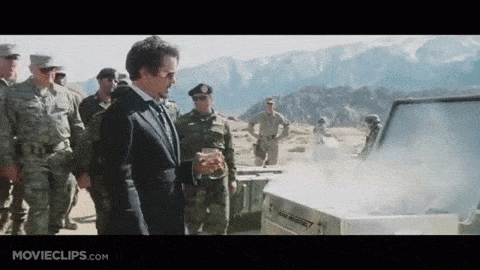
Tony Stark is a playboy war profiteer who secretly yearns to have a close connection with someone who loves him unconditionally.
Steve Rogers is a wimp who secretly yearns to be a masculine war hero.
Thor is a boy who secretly fears he doesn’t have what it takes to be a king.
Star Lord is a playboy space pirate who secretly yearns to have a close connection with someone who lo… uh… wait, we already did this one.
As you can see, Iron Man standardized the format of “hero insists on being seen one way, which is at odds with how he believes he deserves to be seen.” So, in that regard, every Marvel movie is about the hero taking the steps he needs to become the person who’s worthy of the satisfaction he’s technically denying himself.
They’re also all about fate… or at least the hero’s desire to believe that fate exists.
The “Life’s True Purpose” Trope
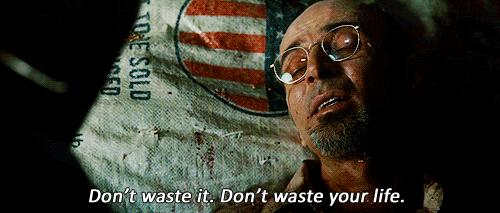
As Yinsen tells Tony on his deathbed, “Don’t waste your life.”
Later, when he’s explaining his sudden change from CEO to savior of the world, Tony tells Pepper, “I lived for a reason.” At least, he tells himself he did, because every Marvel hero (and, really, every one of us) wants to believe their life matters. It gives them a reason to keep fighting — because without a reason, what are they fighting for?
Tony fights to avenge Yinsen, and to clear his conscience.
Thor fights to protect the nine realms.
Steve Rogers fights to uphold freedom.
T’Challa fights to defend the ideals of Wakanda.
Peter Quill fights to keep the “family” of friends he’s made along the way.
It’s like every Marvel hero read Stan Lee and Steve Ditko’s original Spider-Man story and learned from Uncle Ben that “with great power comes great responsibility.” That trope has become such a defining force throughout the entirety of Marvel comics that they’ve recently resorted to mocking themselves for it. In Season Two of Netflix’s Jessica Jones, Jessica informs her estranged mother that if she tells her “with great power comes great responsibility,” she’s gonna puke.
Ten years after Iron Man — and 16 years after Sam Raimi’s Spider-Man revolutionized our idea of what a superhero film was capable of — Marvel’s central ideology is so firmly entrenched in our public consciousness that they can mock their very reason for existence and no one even bats an eye, because deep down we all know what every Marvel hero stands for: rising above our own limitations, on behalf of those who can’t.
Let’s hope that’s one trope the Marvel Cinematic Universe never loses.
More Posts Like This:
How Avengers: Endgame Succeeds on the Strength of Marvel’s Characters
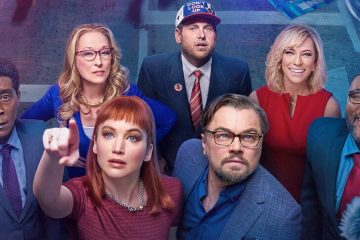
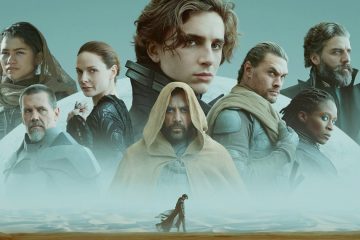
0 Comments